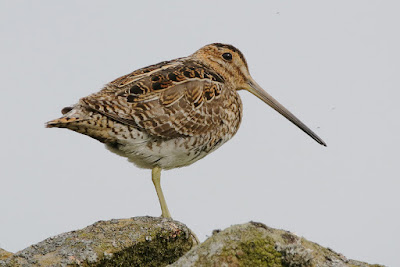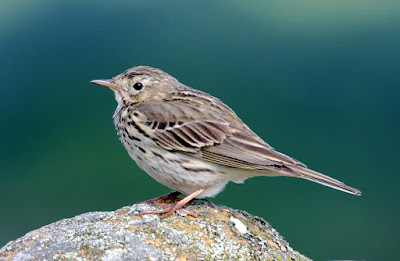Yes, regular reader, I know Wednesday was perfect for birding and photography but I was busy with half-term duties. Today was the first opportunity to get out and about and although weather-wise this morning wasn’t the best, it was dry and warm for the first birding of June.
The set-aside at Cockerham is coming on a treat with lots of oil-seed rape in the mix giving the field a bright yellow glow. I stopped off to check out the couple of pairs of Skylarks close by.
Set-aside field - June 2017
Skylark
Skylark
As before, Gulf Lane is still off limits for ringing due to the latest ringing ban caused following the latest avian flu. But that doesn’t stop us getting details of a recovery from our ringing of over 200 Linnets during the winter.
This time it wasn’t a Linnet but a Reed Bunting that popped into the in-tray.
Andy and I ringed Z860844 a first autumn female Reed Bunting on 12 October 2016, one of only two Reed Buntings caught from September 2016 to March 2017 at Gulf Lane where Linnets were the main target. There is a wet ditch running alongside the plot of set-aside and to see and/or hear a Reed Bunting or two is pretty regular.
Reed Bunting
The BTO details tell us that Z860844 was recaptured by another ringer on 10 May 2017 at Little Crosthwaite, near Keswick, Cumbria, UK, 81 km NNW of Gulf Lane. Unfortunately the recapture information didn’t tell us if the female was in breeding condition or in a potential breeding locality on 10 May even though the date would suggest it should be.
Reed Bunting - Cockerham to Keswick, Cumbria
At Conder Green the roadside Oystercatchers have gone from the now empty nest. We will never know for sure what happened but maybe the pair will learn from their mistake in laying eggs so close to a very busy spot. It’s not just eggs that disappear as the pair of Avocets that a day or two had two youngsters now gone missing to ground or avian predators.
I saw eight Avocets this morning of which two pair appears to be nesting and the other four birds being only possibilities as it is now into June. Also, they spent a lot of time flying between the pool and the creeks rather than sorting out any domestic arrangements.
The remaining Oystercatchers are doing okay with 7 or 8 pairs in attendance and one of those pairs still with two growing youngsters.
Otherwise – 65 Black-tailed Godwit, 14 Shelduck, 8 Tufted Duck, 2 Common tern, 4 Little Egret, 1 Little Grebe, 1 Grey Heron and 1 Kestrel.
A circuit of Jeremy Lane and Moss Lane was a little quiet perhaps due to the cooler, cloudier morning; but I did count 10 Skylark, 7 Sedge Warbler, 6 Whitethroat, 6 Tree Sparrow, 4 Reed Bunting 1 Chiffchaff, 1 Reed Warbler at least two broods of recently fledged Pied Wagtails.
Pied Wagtail
If anyone saw the Autumn Watch programme on TV the other evening they may have wondered why the BBC found it so hard to show us Brown Hares? They are all at Cockerham BBC!
Brown Hare
Brown Hares
Nothing doing tomorrow as my car is due a main service, but back to normal Saturday on Another Bird Blog.




































































.jpg)












